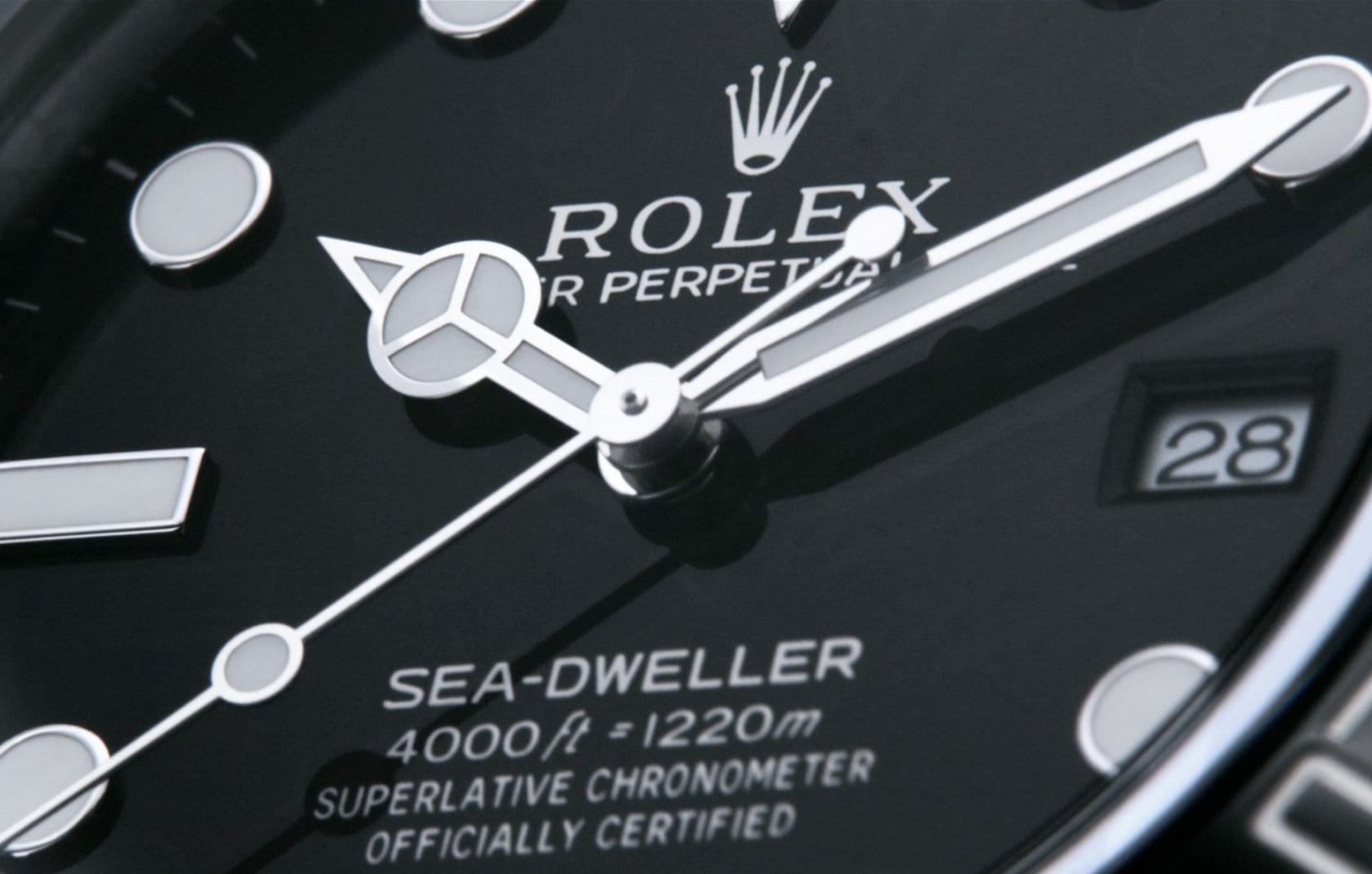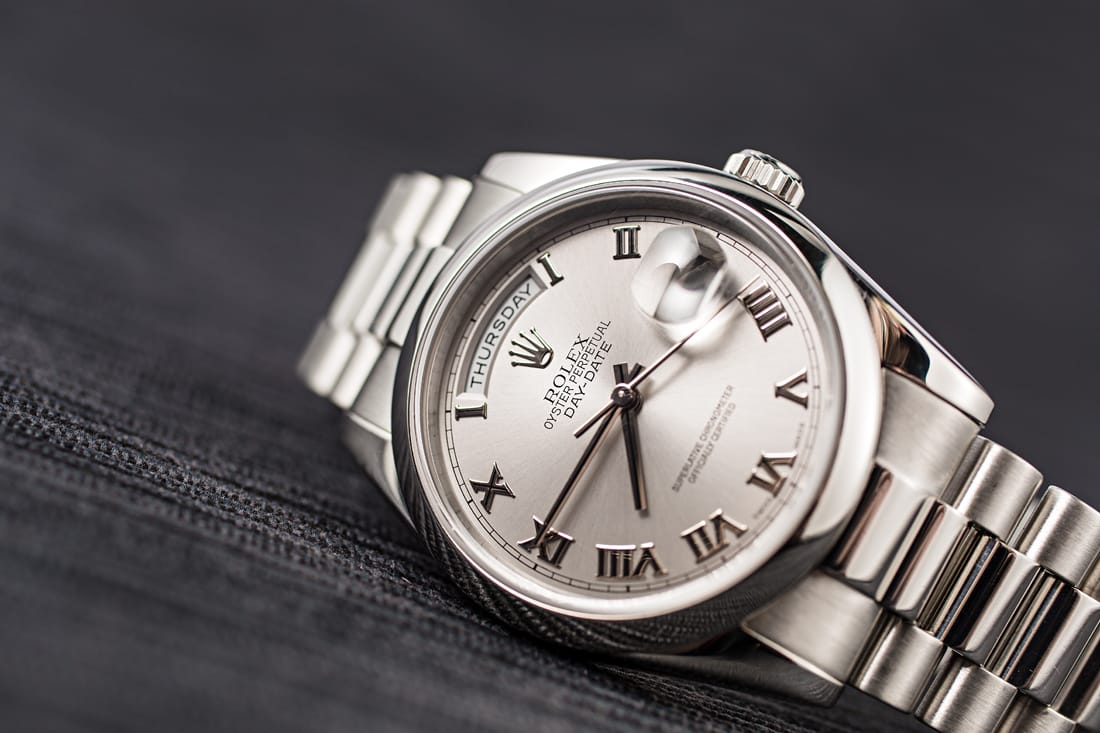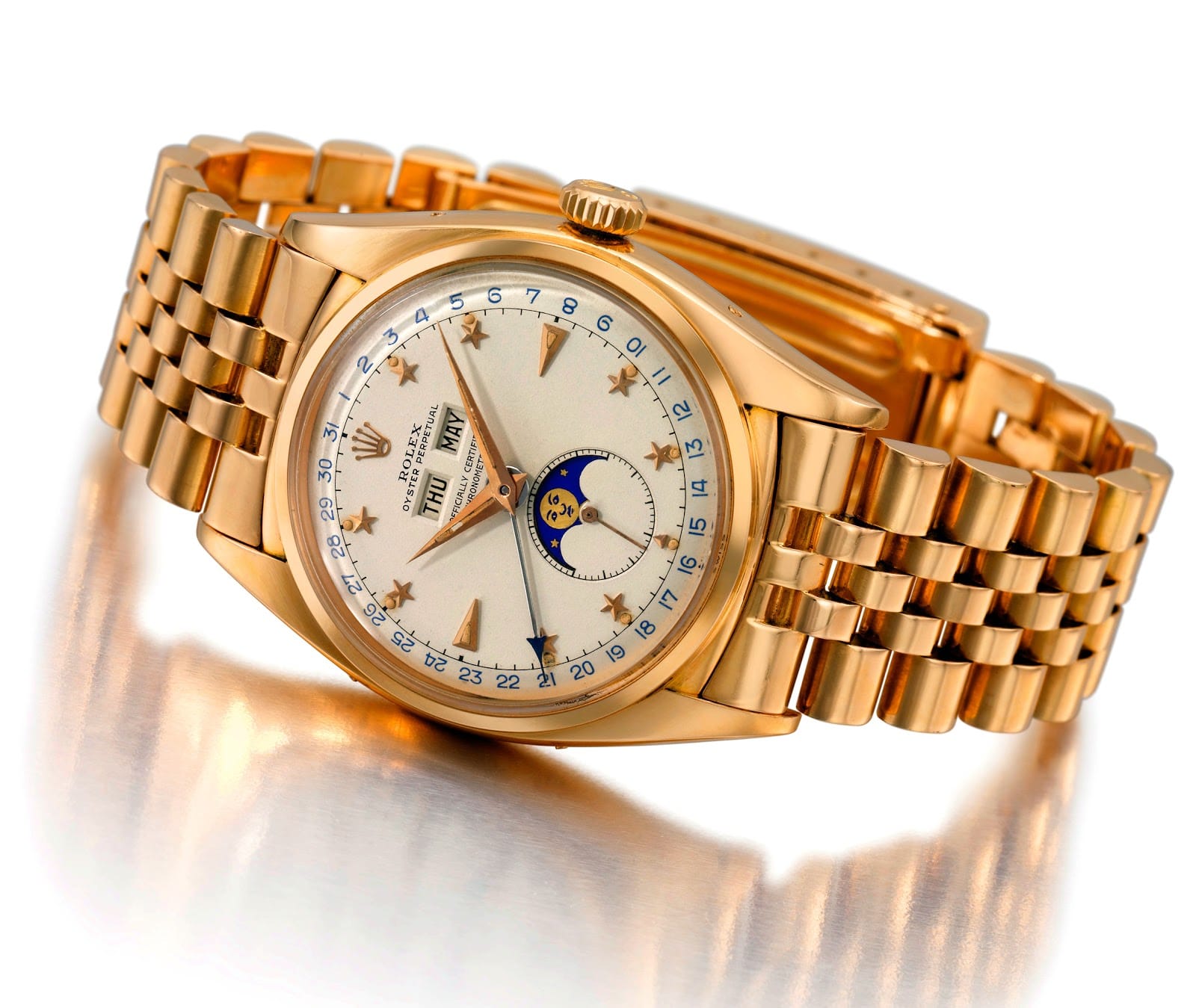Any equipment issued to the world’s armed forces, everything from boots to the most high-tech weapons systems, is going to receive the sort of unforgiving usage that will test its abilities to the limits. Throughout all the punishment, the kit must prove itself tough, faultlessly reliable and simple enough to use in the most stressful of situations—because lives may depend on it.
Rolex, who have built their reputation on producing watches with just those qualities, started their relationship with the military in 1954, when they supplied the British Royal Navy with around 50 examples of their ref. 6538, or, the Bond Submariner.
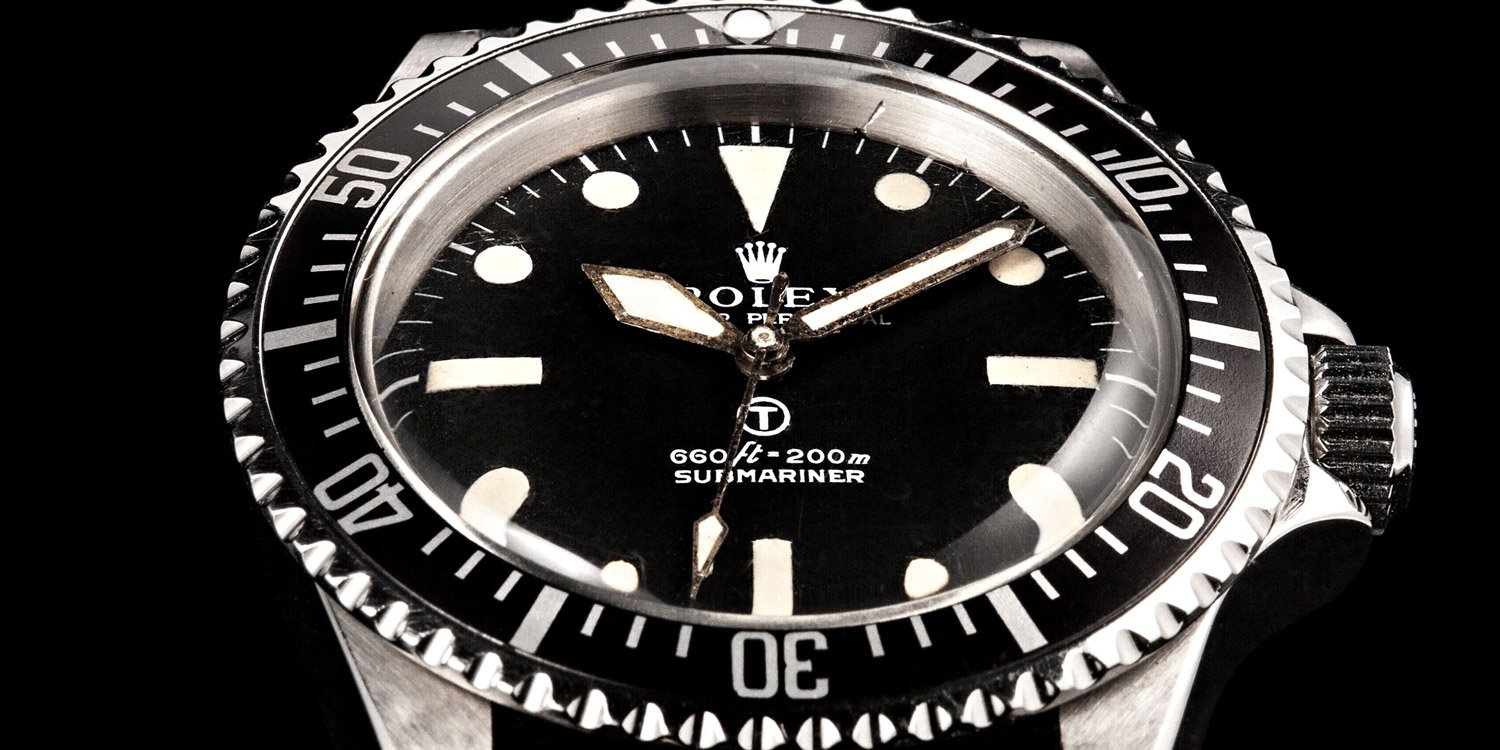
The watch Sean Connery wore when he served Dr. No his just desserts, with its unguarded oversize crown, was sent unaltered to the Ministry of Defence who used it in the field for the next few years, eventually reporting back on its performance.
To its lasting credit, and underlining its status as one of the most superbly engineered watches of the 20th century, only two improvements to the commercially available Submariner were suggested.
The first was a redesign of the bezel, with its existing coin style edging proving difficult for Navy divers to turn while wearing gloves. And the second was the standard spring bars attaching the bracelet, a potentially disastrous point of weakness.
Rolex addressed both issues, soldering the bars to the lugs to accommodate the NATO strap, reworking the bezel to overhang the sides of the case and finishing it with the serrated edge that we know today to make it easier to grip.
The resulting watch was christened the A/6538 and supplied only to the Royal Navy. These pieces, the first of what would become known as the Military Submariners, or Milsubs, were joined a few years later by the updated ref. 5512. Rolex had by this time taken the changes advocated by the MOD and incorporated them into the standard Submariner available to the general public, so the 5512 you could buy in the store was fitted with the new style of bezel. It also had, for the first time, guards protecting its now smaller crown.
Other than that, the only difference between the civilian and military issue watches were the fixed bars for the strap on the Navy’s model.
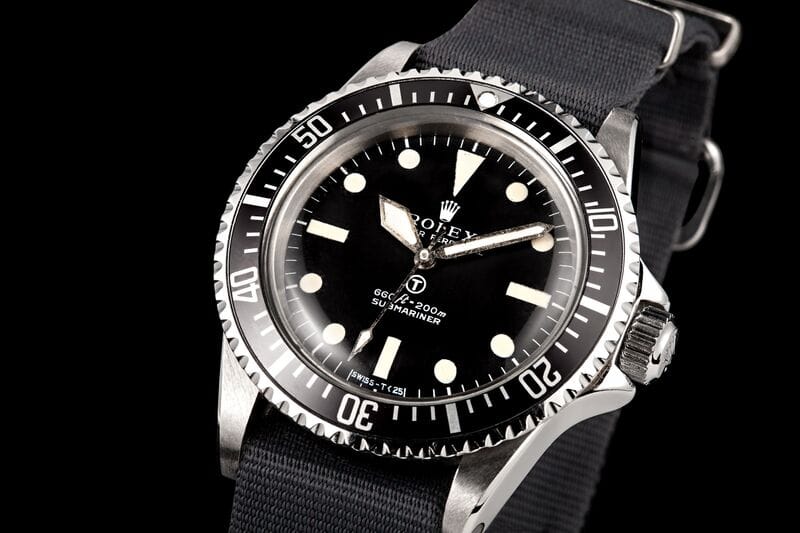
Burford and the Tritium Dials
By the end of the 1950s, the world was becoming aware of the dangers of the radium used in watchmaking—the luminous, and highly radioactive, substance applied to hands and hour markers.
The Navy’s A/6538 and 5512 Submariners were recalled and sent to MOD subcontractor Burford, who manufactured aircraft instruments, to have the radium components stripped and replaced with the much safer tritium. Once complete, the reworked dials were marked with a small letter T in a circle above the Submariner tag—one of those tiny Rolex details that sets hardcore collectors’ hearts fluttering.
To call these early Milsubs rare would be to greatly understate matters. There are, for example, an estimated 12 of the original A/6538 models still in existence. The environments and conditions these watches were used in were not generally conducive to them leading long and happy lives.
However, there are three other Milsub references that, while still extremely scarce, at least give us the chance of seeing one in the wild.
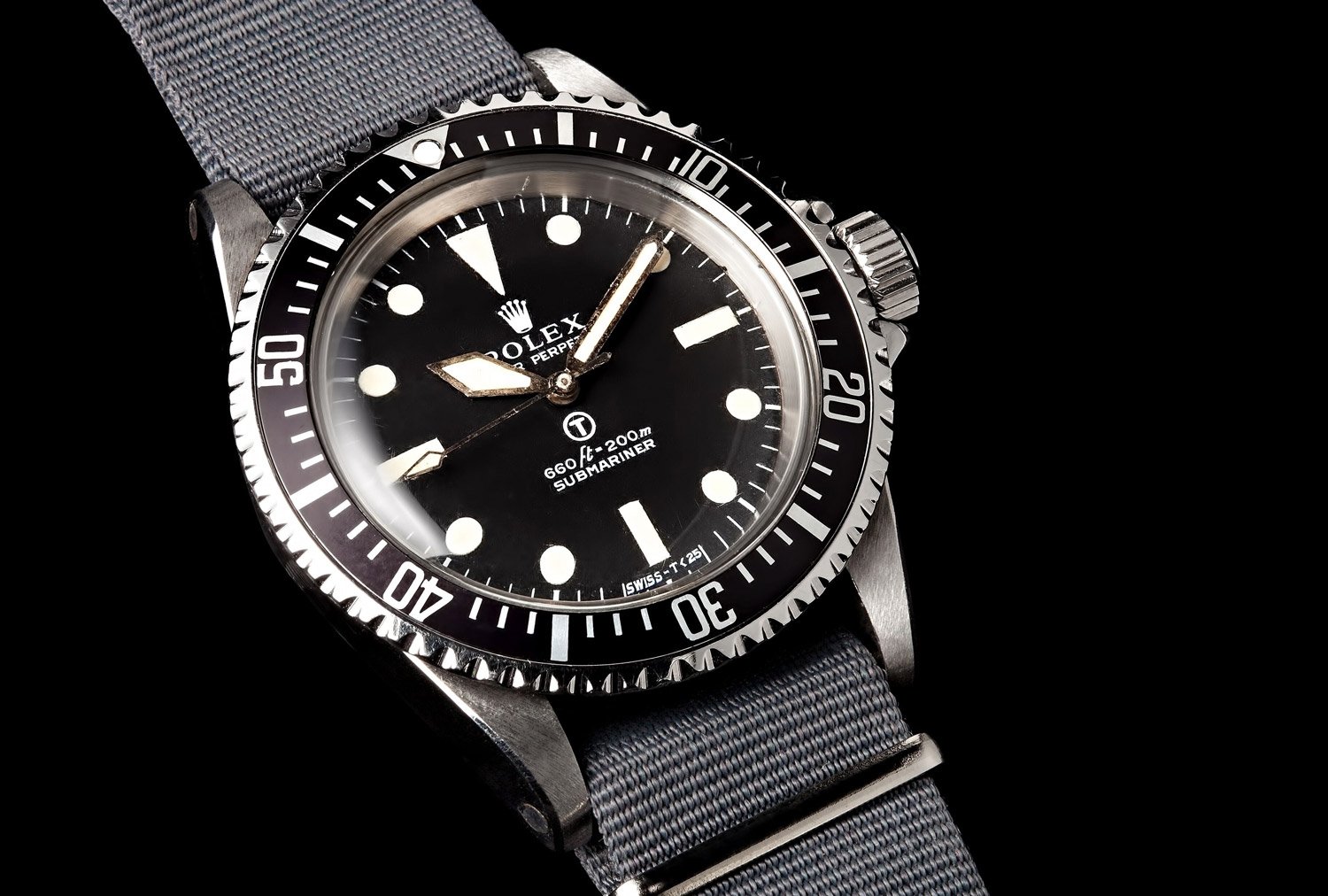
The Official Milsubs
In the 1970s, the MOD once again called on Rolex to supply their elite special forces personnel with a dive watch, to replace the Omega 300 Seamasters the SAS (Special Air Service) and SBS (Special Boat Service) had been using.
Between 1972 and 1979, around 1200 of these either modified or else specially created pieces made their way to the Royal Navy and British Army storerooms.
The first of the three references, the ref. 5513, was customized from the civilian version in some models by the addition of oversized sword or Gladiator hands to give greater visibility. They, as well as the indexes, were again filled with tritium and the matte dial stamped with the small circled letter T. On many of the bezels, the normally 15 minute graduations continued round for the full 60 minutes to give divers a more accurate measurement of their time underwater, and the extra strong canvas NATO strap was once more attached with fixed bars.
The case back too, unlike practically every commercially available Rolex, was engraved. Those issued to the Navy’s SBS designated with 0552 at the start of their part number, their counterparts from the Army, the SAS, marked with W10.
By the end of the seventies, Rolex introduced the ref. 5517, a Milsub only ever supplied to the military and not made available to the general public. Every example of this watch was fitted with the 60 minute bezel and the large, flat, sword-style hands. In between, a tiny selection were released as ref. 5513/5517, in what is known as a double reference.
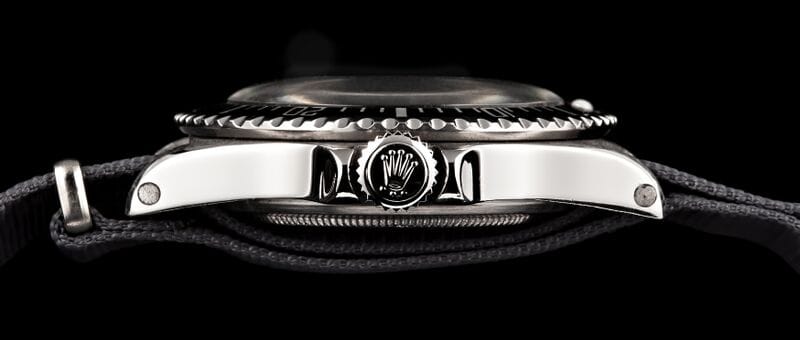
Finding a Vintage Milsub
Between the extremely limited production run, and the tortured existence most of these watches have led, finding a genuine Milsub for sale in good condition is like spotting Brigadoon—one might emerge out of the mist every 100 years or so, but not for long.
Being used on the frontline, the watches were often sent for servicing more often than a civilian model would be, resulting in very few surviving in their original configuration. The hands especially were liable to be damaged by oxidization and peeling, causing them to be replaced.
The incredibly high prices Milsubs achieve on the pre-owned market (think six figures as a starting point) have also led to another problem all too common with vintage Rolex—counterfeits. There are a sea of fakes in circulation, ready to prey on the unwary, so going into a sale armed with all the facts concerning the slew of small but important details of what the authentic article should and should not have is essential. Wherever possible, only buy from dealers you know and trust and always be ready to walk away if something seems iffy.
There’s no doubt the Milsubs are at the very top of most Rolex collectors’ wish lists. Beyond the model’s provenance and the rarity value, each one comes complete with the kind of backstory that most of us can only dream of—and the sort that lends a commonplace design classic its own unique personality.



